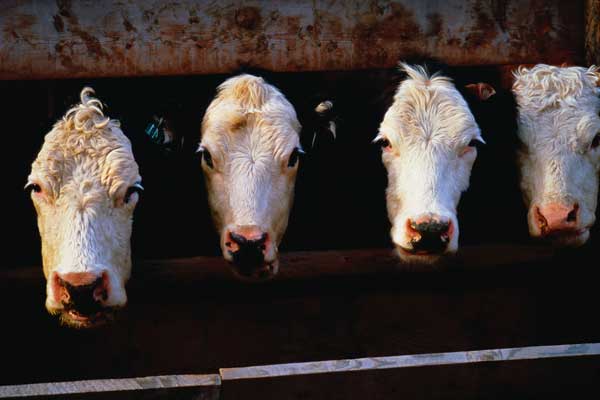January 14, 2013

For many years, cheap grain meant almost anything that enhanced grain use, and feedlot measures of technical efficiency were consistent with beef industry efficiency. This is no longer true.
“As feedlots feed animals placed at heavier weight, feed conversion on a per-pound-of-gain basis will increase, but overall industry use of grain will decrease,” said Derrell Peel, Oklahoma State University Cooperative Extension livestock marketing specialist. “This underscores the necessity to measure efficiency across the entire cattle industry and not just in the feedlot sector.”
It is often noted that beef is the least efficient user of grain among livestock industries. Generally, cattle finishing requires five to six pounds of grain per pound of meat produced compared to less than three pounds per pound of meat produced for pork and less than two pounds for broiler production.
“However, this is only during the finishing phase and does not consider the amount of grain relative to the total weight of the animal,” Peel said.
For example, a 600-pound feeder animal fed to 1,350 pounds means that 56 percent of the total finished weight is completed in the feedlot with grain. Using a 5.5 pound feedlot conversion means that 4,125 pounds of grain are used to produce the animal, which is an overall grain use of 3.06 pounds of grain per pound of finished weight.
“Recognizing this alone means that beef is not nearly as inefficient compared to pork and poultry as the feedlot portion alone would suggest,” Peel said. “Moreover, the beef industry has the ability to adjust the industry production process while maintaining carcass quality and meat characteristics, both of which represent significant advantages toward producing an end-product desired by consumers.”
For example, by increasing the placement weight to 850 pounds, the feedlot phase represents 37 percent of the total 1,350-pound final weight of the finished animal. The larger – and likely older – animal will have a higher feedlot conversion, perhaps seven pounds of grain per pound of gain.
Thus, the total amount of grain used to produce the finished animal is 3,500 pounds of grain, down 15 percent from the lighter weight placement listed previously. Total grain use for the industry is now 2.59 pounds of grain per pound of finished animal despite the fact that feedlot conversion is higher when feeding an animal placed at a heavier weight.
Examples presented in this story are generalized and do not include all the details of animal production; however, Peel said they do illustrate the basic concept and several important implications for the beef industry.
“The beef industry can respond to high grain prices by changing the industry production process so that a higher proportion of total animal weight is achieved with forage-based production prior to feedlot finishing,” he said. “It also means that the technical efficiency measure of feedlot conversion is not the appropriate measure of industry efficiency with respect to grain use.”
You May Also Like




